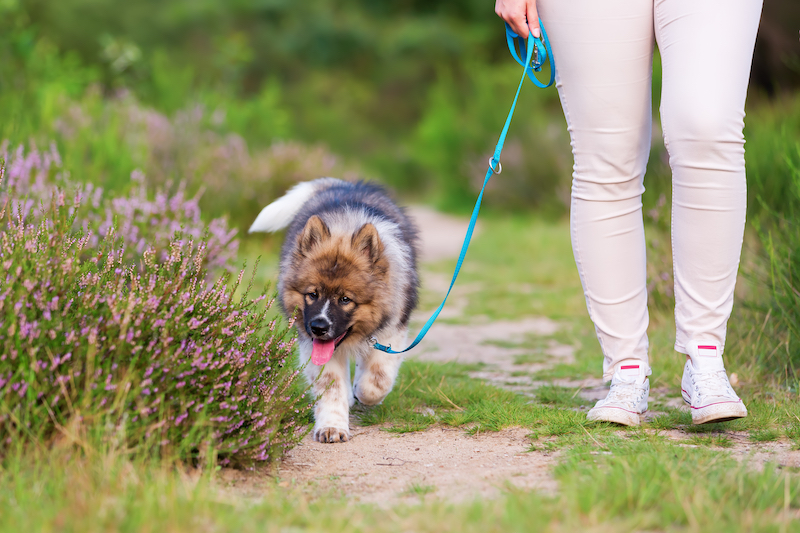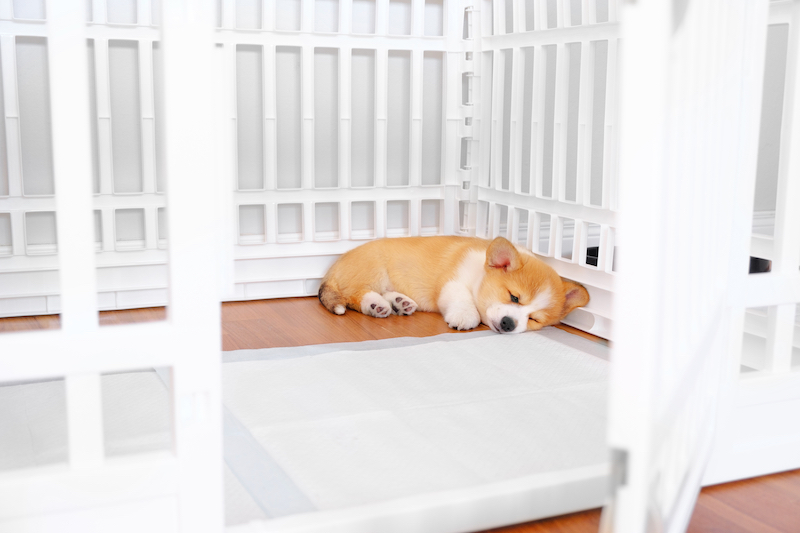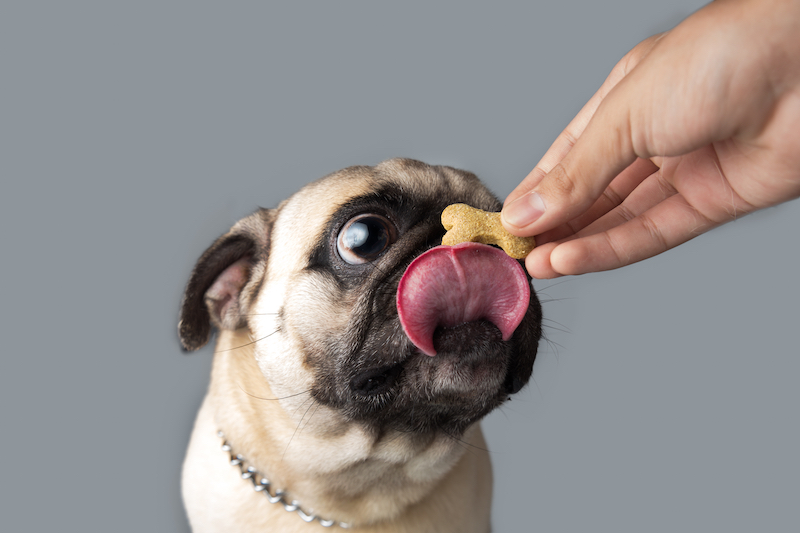Puppy Potty Training Tips and Tricks
Set your pup up for success.

Set your pup up for success.

We’ll be honest: Potty training your puppy is… a process.
There’s no such thing as a quick fix to achieve good toilet habits at home. Each dog is on their own journey, so the road ahead will demand a lot of training, patience, and cleaning products.
At Lemonade Pet, we understand the importance of getting your newest family member acclimated to their home. So we asked Kait Hembree, Head of Training at GoodPup, about her tips and tricks for successful puppy potty training.

Puppies can start house training the minute you bring them home. And if your pup is coming from a reputable breeder, they may start the process even sooner.
When you begin the house training process, a few things are key to preventing accidents as a puppy learns where to eliminate. You’ll want direct supervision, a consistent elimination schedule, and a management plan when a consistent schedule isn’t available—like exercise pens, small dog-proofed areas, and sometimes even crate training.
Each puppy is an individual. But with the right guidance and plan, most puppies should be house trained by 6 months old, if not sooner. Don’t forget though—even with a fully-trained adult dog, occasional accidents will happen, so don’t pressure your pup towards perfection.
If you work from home, or have a dog walker while you’re away during the day, you can get your pup on a set routine that includes plenty of walks and potty breaks outside.
But what if your schedule, or financial necessity, means that your pup is home alone for long stretches? While it isn’t ideal, puppies that need to be left for longer periods of time between potty breaks can still be successfully house trained. The process may take longer and accidents are inevitable, but house training plans can accommodate even the busiest schedule.
Puppies that are left for longer than ideal periods of time should be given access to an appropriate potty area. That might mean potty pads left on one side of their personal space. If you’re putting the pads in your pup’s crate, make sure they still have enough space to comfortably lie down and turn around away from the mess.
As your puppy grows and their bladder control improves, the pads can be phased out. Until then, it will still be important to have an established potty area for your puppy outside of their space, and to maintain a consistent elimination schedule at their designated potty spot when you are home.

Using puppy pads for the house training process, or as a long-term house training solution, is a personal choice. However, if your ultimate goal is to have your new puppy eliminate outside, then training might be more successful without the use of potty pads.
If you’re using pads for house training purposes, or even as a temporary solution to leaving your pup for longer than ideal periods of time, make sure of the following:
If you decide to use potty pads as part of house training, they should eventually be phased out. You can begin to do so once your puppy is old enough to hold their bladder between the outdoor elimination times you offer, or when they’re successfully using the bathroom outdoors every time they’re given the chance.
For some puppies, phasing out potty pads is as simple as removing them. But other dogs may have grown attached to the pads, and will need a gentler transition. Pads may need to be slowly decreased in size until they “disappear,” or steadily moved a few feet daily until they are outside the home again, after which you’d slowly scale down the size of the pads you use until you quit using them altogether.
When your pup has an accident at home, never punish them. Putting their nose in the mess, or raising your voice, won’t help them understand that they did anything wrong. Plus, it could create fear around the training process.
If your pet does have an accident, clean it up well with enzymatic cleaner. This will help eliminate (or at least reduce) the smell of the accident so they don’t associate that spot as being a designated “potty area.”
Then consider the bigger picture of the accident:
Try to figure out why your puppy had an accident. Then you can make the necessary changes in their schedule to prevent it from happening in the future. This could be things like shortening the time frame between eliminations, or offering elimination opportunities immediately following eating, drinking, napping, or playing.
Be sure to discuss your house training process during your regular veterinary visits—which should already be part of your puppy’s life those first few months. The vet can help dissect if there is a medical or behavioral concern if your puppy is continuing to have accidents—especially if your puppy is older than 6 months. It’s not uncommon for puppies to develop urinary tract infections (UTI), which can impact successful house training.
A base Lemonade pet insurance policy could help cover the costs for treating an illness that might be causing your pup’s potty problems (like a UTI, kidney disease, or diabetes), and the behavioral add-on could help cover the cost of vet-recommended dog training and medication for behavioral issues like separation anxiety.

Changes in routine, lifestyle, general daily stressors, and medical concerns can all influence a dog’s potty habits. But ultimately, most adult dogs don’t require the same level of consistency that puppies do once house trained—keeping in mind that dogs don’t socially mature until 2 to 3 years of age.
However, dog owners should continue to maintain a regular elimination schedule, feeding schedule, and randomly offer rewards for successful eliminations in the appropriate areas in order to ensure good habits long term.
That said, accidents happen. Being a pet parent means facing the occasional unpleasantness, no matter how well-trained your furry friend is.
With every aspect of training and taking care of your puppy (but especially with house training), consistency and positive reinforcement play a critical role in finding success. This includes having anyone who’s involved in the puppy’s training following the same guidelines and practicing the same rewards.
It’s important as a pet parent to maintain realistic expectations when it comes to house training. Take the time and energy to learn and respect your puppy’s elimination needs in order to set them up for long-term success, knowing that along the way there will most likely be a few messes to clean up.
A few quick words, because we <3 our lawyers: This post is general in nature, and any statement in it doesn’t alter the terms, conditions, exclusions, or limitations of policies issued by Lemonade, which differ according to your state of residence. You’re encouraged to discuss your specific circumstances with your own professional advisors. The purpose of this post is merely to provide you with info and insights you can use to make such discussions more productive! Naturally, all comments by, or references to, third parties represent their own views, and Lemonade assumes no responsibility for them. Coverage and discounts may not be available in all states.
Please note: Lemonade articles and other editorial content are meant for educational purposes only, and should not be relied upon instead of professional legal, insurance or financial advice. The content of these educational articles does not alter the terms, conditions, exclusions, or limitations of policies issued by Lemonade, which differ according to your state of residence. While we regularly review previously published content to ensure it is accurate and up-to-date, there may be instances in which legal conditions or policy details have changed since publication. Any hypothetical examples used in Lemonade editorial content are purely expositional. Hypothetical examples do not alter or bind Lemonade to any application of your insurance policy to the particular facts and circumstances of any actual claim.